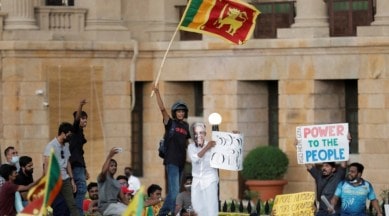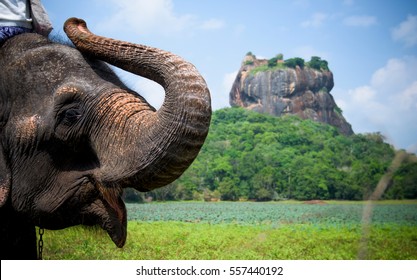Snowball Effect - Sri Lanka’s Economic Emergency Part II
Well, well, well...what do we have here? A part II? My predictions have come true? * sips Sri Lankan tea * Nevermind, I didn’t want to sound that cocky over a nation’s economic struggles, when I don’t even manage my own finances. I missed quite a lot of subtext and history in part I, now in part II I revisit Sri Lanka (I mean it’s crisis) and break it down so that we understand better and even suggest solutions!
Present Situation
Imagine you hear this headline one day, “Exams cancelled over paper shortage”. Does that sound too good to be true?
Well, Sri Lankan students heard this a month ago. Now onto the more serious aspects of the economic situation in Sri Lanka, over 500,000 Sri Lankans fell into poverty because of the crisis. There is no fuel, no medicines. Critical surgeries are being cancelled! People are queuing up to buy food which is scarce and very expensive. There are daily blackouts and wide scale protests because the people are unhappy with the government.
“What could have ever caused this? I mean Sri Lanka looked fine just like 10 months ago.” (You think?)
Reasons and Repercussions
There are 4 primary reasons for this crisis:
1. Massive external debt since 2010Mahinda Rajapaksa was elected as the president in 2005 and stayed as the president until 2015. He wanted to show the progress of Sri Lanka under his term and so he hastily took a loan of a lot of amount from different countries, IMF, world bank, etc... to develop the infrastructure of the country.
Sri Lanka borrowed money from China to build a port in Hambantota. Soon after, in 2017, the port was handed over to China because Sri Lanka feared it would not be able to pay back the money. It fell into “Chinese debt trap diplomacy”. The Chinese knew very well that Sri Lanka wouldn’t be able to pay back the money they owe to China. Along with a loan, China also gave Sri Lanka something else. Can you guess what? Yeah, it’s COVID. I’m not putting all the blame on China here, just saying. (Don’t come at me later)
2. Decline in FOREX reserves due to IMPORT
Sri Lanka is an import based country. It imports more than it exports, which directly translates to it spends more than it earns. That obviously means its bad for the economy since it has to compensate for the loss by itself (They can do this with taxes, revenue from other fields like tourism, agriculture, etc). To pay for imports, Sri Lanka must pay in the currency of the country it’s importing from (it’s mostly USD). Now this obviously depletes the foreign currency reserves (FOREX reserves) that Sri Lanka has. And why is that bad? Well if you do not have dollars to pay for something that’s in dollars, you’d have to convert your own currency into dollars to pay for it. And that means you’ll have to pay more than you can imagine, because a few dollars are much more in Sri Lankan or even Indian Rupees.
Depleting forex reserves means decreasing value of currency. If we step in the present for a bit, Sri Lanka knew that it’s currency value was decreasing, so it (I mean he, Gotabaya Rajapaksa’s government) took a few decisions like -
In April 2021, it banned the import of all chemical fertilizers and wanted to shift to organic agriculture. Why? “For good health” the government said, but it was actually to preserve the foreign dollars used to buy the fertilizers. This actually was a big blunder because this decreased the production of various agricultural goods like tea, spices, coconut products. It decreased the production of rice (their staple food) by 52%! They were forced to import rice.
In July 2021, it banned the import of luxury goods for the same reason.
All this lead to major food crisis, and people were queuing up to buy food which was scarce.
3. Decline in Tourism due to pandemicFirst in April 2019, Easter bombings scared the tourists and then because of the pandemic the tourists stopped coming. Now this is a major problem because 13% of the GDP of Sri Lanka is from the tourism industry, which also provided them with FOREX.
Sri Lanka also gained revenue from “remittance fees”. Remittance is basically when someone from developed countries like US sends his/her home (developing countries) some money or goods. When this happens the government gets something called “remittance fees” in exchange for converting the currencies.
So at this point, Sri Lanka was pretty desperate, so it “devalued” (reduced the value of) its own currency to get higher remittance fees. With its currency value down by a lot, imports were becoming harder, the costs of goods and services hiked. And who suffered? All the people! They were affected gravely.
4. High level corruption in govtWhen Gotabaya Rajapaksa was campaigning, he promised that if people voted for him, they’ll have to pay less taxes. That’s all fine but, how will the government make money? How will it pay back its debts?
Before it was Mahinda Rajapaksa as the president, after a while it’s Gotabaya Rajapaksa as the president and Mahinda Rajapaksa as the prime minister. Rajapaksa, Rajapaksa.......Need I say more?
.....................................
And just like that, this nation slowly screwed all it’s income sources. It’s net worth fell down to 1.94 billion. Which is comparable to the net worth of “Kylie Jenner”. But she is a person, Sri Lanka is a country with 20 million people as the population. I cannot tell you how sad I am. While discovering the economic situation of Sri Lanka, I also discovered the struggles of its people, the bad decisions of the government.
Solutions
I could go on and on about the reasons...but can I give a solution? Better awareness of a situation just pressures me more to provide one. I cannot give the best one, but I can try.
Let’s look at a similar case that happened in the past, which is of “South Korea”. SK faced a financial crisis after war had ended, they took the help of IMF, received a bailout of $60 billion. And slowly they recovered. An economy that crashes cannot be saved in a day, but things must be done to ensure that the daily life of citizens is back on track.
Short-Term Solution
Sri Lanka has no choice but to ask for a bailout from IMF of costs that are estimated to be $20 billion or more. Apart from taking help from IMF, Sri Lanka should also default(not pay back) the debt it owes this year, because the money that is gained from IMF must be used for running the economy first rather than paying off most of it. Sri Lanka should also accept the strong economic reforms that IMF will probably bring forward in the country. When it’s too late to run by your own rules, you should follow the experts.
Since Sri Lanka’s problem primarily stems from large amounts of debt, it is clear they must “restructure” their debt. That is they find countries or lenders that can loan them money for less interest and pay off the required money to the main or bigger debt with higher interest, doing this smartly will greatly reduce the burden of paying off debt. Though this solution must be done only after the economy is back on track, it must not be postponed any further.
Long-Term Solution
If taking IMF’s help is a band aid, then following economic reforms will be medicine. Just a band aid isn’t enough for big wounds to heal.
Sri Lanka is “trade deficit”, that is, it imports more than it exports. It also doesn’t have enough supply of FOREX to keep the imports up, Sri Lanka should gradually minimize its imports. Note that I said gradually, it definitely does not make any sense to do this overnight. (Like idk, banning the fertilizers all together) The Sri Lankan government must encourage (instead of force) the industries to produce goods and services using alternatives instead of importing the raw materials.
Sri Lanka’s agricultural sector must change in such a way that they are able to produce the required food as much as possible instead of importing. In the long run, the government can give such industries and companies rewards to encourage them. This should reduce the problems of excessive importing and increase the value of Sri Lankan currency.
Not much can be said about tourism in any country, let alone Sri Lanka, although I hope it gets better, Sri Lanka must find other sources of income, instead of relying heavily on tourism.
When there are problems, you know it’s time for change. And when there’s change you always have an opportunity to come out of it more prosperous than before! We are with you Sri Lanka, we want to see you prosper and grow.
Author:
Soumya Oruganti - That was long. Comment "Ayubowan" (which is a greeting in Sinhala) if you made it this far. But honestly it’s such a beautiful country, I hope I visit it someday.



Nice information 🙂
ReplyDelete